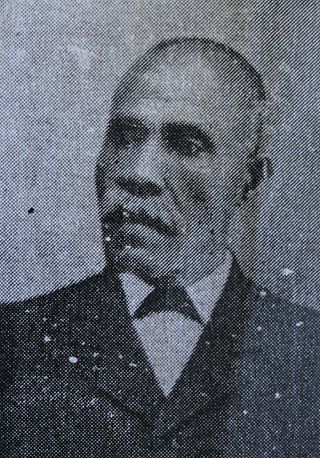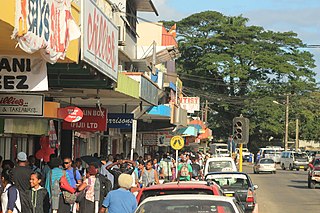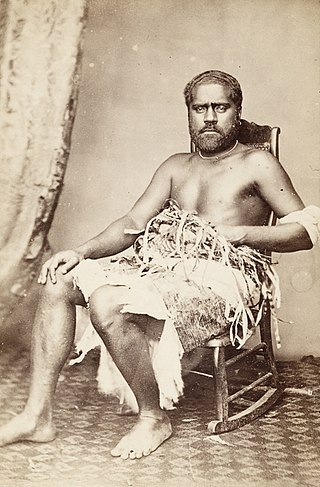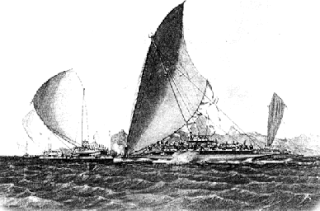This article needs additional citations for verification .(December 2009) |

Tailevu is one of the 14 provinces of Fiji. Its capital town is Nausori, which lies along the banks of the Rewa River.
This article needs additional citations for verification .(December 2009) |

Tailevu is one of the 14 provinces of Fiji. Its capital town is Nausori, which lies along the banks of the Rewa River.
One of the eight provinces based in Viti Levu, Fiji's largest island, Tailevu's 755 square kilometers occupy the south-eastern fringe of the island along with some central areas. [1] At the 2017 census, it had a population of 64,552, the fifth largest among the provinces. [2]

Tailevu includes the districts of Bau, Nakelo, Verata, Vugalei, Wainibuka, Dawasamu and Sawakasa. [3] Bau District includes Bau Island, the seat of the Kubuna Confederacy, one of three traditional chiefly hierarchies in Fiji. [4] Kubuna's Paramount Chief, called the Vunivalu of Bau , is generally considered the most senior such chief in Fiji. [4] It also includes the village of Maumi 21km north-east of Suva, who speak their own dialect, known as Nawakura. [5] [6] The population chose to move from a more remote area in 1977. [5]
The main urban area of Tailevu is Nausori with a population of 24,950. [7] The North of Tailevu is the backbone of the Dairy industry in Fiji which helped to establish Rewa Dairy. [8] Also located in the province is the Nausori International Airport, a major transportation hub for domestic and regional travel. [9]

RatuSeru Epenisa Cakobau was a Fijian chief, monarch, and warlord (Vunivalu) who united part of Fiji's warring tribes under his leadership, establishing a united Fijian kingdom. He was born on Natauloa, Nairai Island in Lomaiviti but spent his youth on Vanuaso, Gau, Lomaiviti, later returning to Bau to re-establish his Father's Ratu Tanoa Visawaqa reign. Ratu Epenisa Seru Visawaqa was given the name "Cakobau" meaning destroyer of Bau, in reference to his grandfathers' (Nailatikau) effort to first claim the tile from the people of Butoni and Lovoni, returned with most of his warriors from Vanuaso, Gau, Lomaiviti to coup the leadership in Bau then and later takeover his father's title; known after his father as the 6th "Vunivalu" or Warlord of Bau.
Ratu is an Austronesian title used by male Fijians of chiefly rank. An equivalent title, adi, is used by females of chiefly rank. In the Malay language, the title ratu is also the traditional honorific title to refer to the ruling king or queen in Javanese culture. Thus in Java, a royal palace is called "keraton", constructed from the circumfix ke- -an and Ratu, to describe the residence of the ratu.

RatuJoni Madraiwiwi was a Fijian Ratu and early colonial administrator in what was then the British Crown Colony of Fiji.
The House of Chiefs in Fiji consists of the Fijian nobility, composed of about seventy chiefs of various ranks, majority of which are related. It is not a formal political body and is not the same as the former Great Council of Chiefs, which was a political body with a prescribed constitutional role, although the membership of the two bodies did overlap to a great extent.

Kubuna is one of the three confederacies that make up Fiji's House of Chiefs, to which all of Fiji's chiefs belong.

Turaga na Vunivalu na Tui Kaba, shortened as Vunivalu, is the Paramount Chief of the Kubuna Confederacy of the island of Bau in Fiji. Loosely translated the title means Warlord of Bau or "Root of War". The succession to the title does not follow primogeniture, but the candidate must be a high-ranking member of the Tui Kaba clan.
RatuGeorge Kadavulevu Cakobau Jr., also known as Ratu Joji, was a Fijian chief and senator. He was the eldest son of the late Governor-General and 12th Vunivalu of Bau Ratu Sir George Cakobau, through his first wife Adi Veniana Gavoka, and was a great-great-grandson of King Seru Epenisa Cakobau, the warlord who established the first unified Kingdom of Fiji in 1871 and ceded it to the United Kingdom in 1874.
There are three confederacies in the Fijian Traditional Government, Kubuna, Tovata and Burebasaga. One of the two Paramount chiefly tribes in the Kubuna Confederacy is the "ToraniBau" the other

RatuEpenisa Seru Cakobau is a Fijian chief and politician. Cakobau is a senior member of the Tui Kaba clan. He is the 13th Vunivalu of Bau.

Nausori is a town in Fiji. It had a population of 57,866 at the 2017 census. This makes it the fourth most populous municipality in the country. Situated 19 kilometers outside of Suva, it forms one pole of the burgeoning Suva-Nausori corridor. Nausori is home to three provinces Rewa, Tailevu and Naitasiri.

Bau is a small island in Fiji, off the east coast of the main island of Viti Levu. Bau rose to prominence in the mid-1800s and became Fiji's dominant power; until its cession to Britain, it has maintained its influence in politics and leadership right through to modern Fiji. Due to its sacred nature, foreigners have to apply for a permit to visit.
Naitasiri is one of the 14 provinces of Fiji and one of eight located on Viti Levu, Fiji's largest island.
Nakorotubu is one of nineteen districts in Fiji's Ra Province. It consists of seven sub-districts or sub-regions: the five villages of Namarai, Nacobau, Nadavacia, Saioko and Verevere.
AdiLitiana Maopa (1864-1933) was a prominent member of two of Fiji's main chiefly houses, those of the Tui Nayau, the paramount chief of the Lau Islands, and the chiefly house of the Vunivalu of Bau the paramount chief of the Kubuna Confederacy.

RatuTanoa Visawaqa was a Fijian Chieftain who held the title 5th Vunivalu of Bau. With Adi Savusavu, one of his nine wives, he was the father of Ratu Seru Epenisa Cakobau, who succeeded in unifying Fiji with the help from British missionaries and the crown into forming the contemporary Fiji today.

RatuEpeli Nailatikau I was a Fijian Paramount Chief, who was posthumously made the Vunivalu of Bau.
Tailevu Naitasiri F.C. is a Fijian football team playing in the second division of the Fiji Football Association competitions. It is based in Nausori, which is a town on the island of Viti Levu, and about 20 kilometers north of the capital, Suva. Their home stadium is Ratu Cakobau Park. Their uniform includes sky blue shirt, white shorts and blue socks.

The Lasakau Sea Warriors were a 19th-century warrior sub-culture in the pre-colonial state of Bau, in Fiji. The sea warriors were instrumental in spreading Bau's political power throughout the South Pacific archipelagic islands. The rise of the eminent islet of Bau amongst other embryonic states was due mainly to the projection of sea power through its naval forces. Bauan chief Ratu Loaloadravu Tubuanakoro was praised by French Captain Dumont D'Urville in May 1827 for his geographic knowledge of the Fijian archipelago signifying Bau's naval influence. More far-ranging than Bau's land warriors led by the Vusaradave clan, the Lasakau clan became the leading proponents of war and tribute for the emerging island kingdom. They became known as the Bai kei Bau or 'War fence of Bau'. Sahlins made the crucial observation that," The kings of Bau based their rule not on native cultivators but on native sailors and fishers-which is to say in Fijian categories, as in political strategies, not on the land but on the sea". This was the great political transformation that catapulted Bau to power over other pre-colonial kingdoms.
Bau is the main village on Bau Island, Fiji. Once integral to the power and economy of the chiefly village, the villages of Lasakau and Soso are also located on the twenty-two acre island which became the centre of traditional power throughout the Fiji Islands in the nineteenth century.
RatuIlaijia Varani was a chief of Viwa, Bau Island, Tailevu in Fiji in the mid-to-late 19th century.